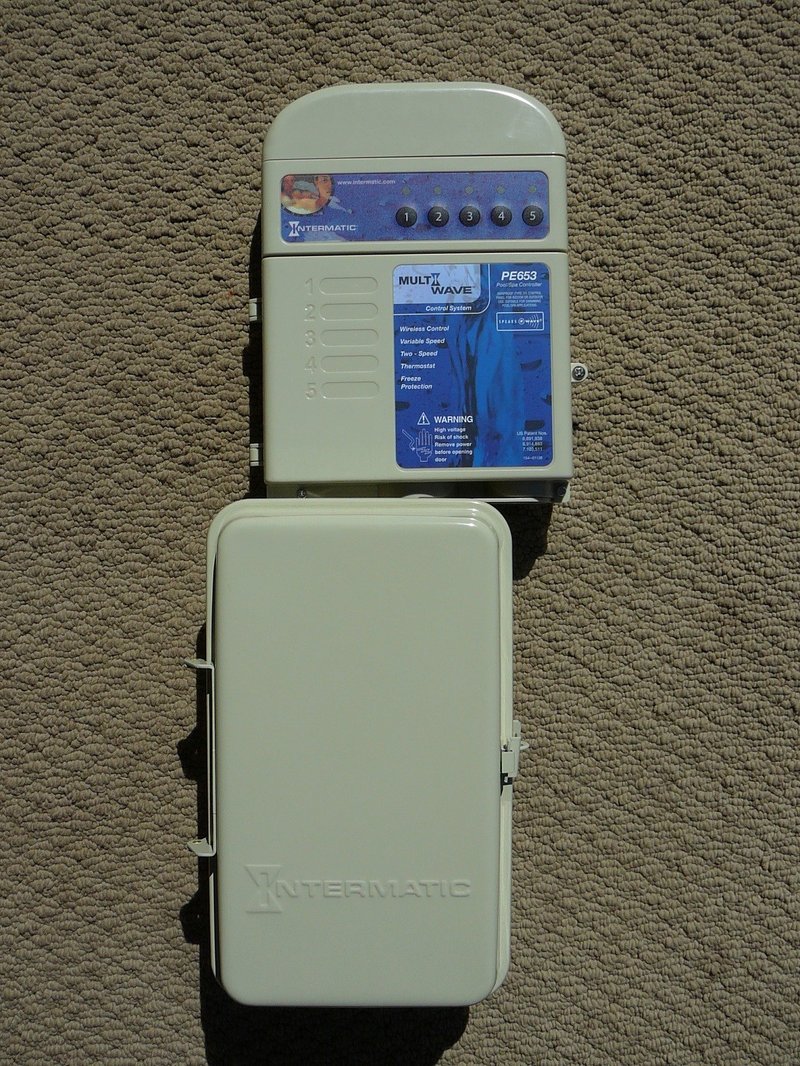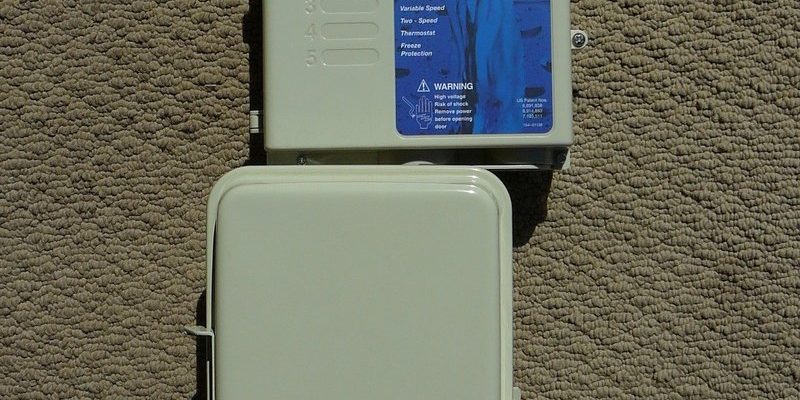
Honestly, the freedom to manage your pool’s temperature remotely isn’t just about convenience; it’s about letting technology quietly upgrade your everyday routines. An Intermatic pool remote, whether it’s the classic handheld model or a more modern touchscreen controller, lets you adjust, tweak, and check up on your pool’s temperature settings without ever getting your hands wet. No more fiddling with confusing buttons on the poolside panel, or second-guessing if you left the heater running. Think of it like having a smart thermostat—only for your backyard oasis.
Let me explain exactly *how* you can set your pool temperature remotely using your Intermatic system, what you’ll need, and a few pro tips so you’re not left out in the cold (literally). Let’s dive in.
What Is an Intermatic Pool Remote and How Does It Work?
You might be wondering, “What kind of magic makes this possible?” Here’s the thing: an Intermatic pool remote is basically a wireless controller that lets you manage your pool’s settings—temperature, pumps, lights, and sometimes more—from a distance. Depending on your model, this could be a dedicated handheld remote, a wall-mounted unit, or even an app on your smartphone.
Most Intermatic remotes pair directly with your pool’s automation system—think of it as the central “brain” that listens to your commands. This brain is usually an Intermatic PE653 or PE950 unit (don’t worry, you don’t need to memorize the code numbers), which connects to your pool heater and other equipment. The remote then sends signals, often over RF (radio frequency), to tell your pool system exactly what to do.
- Handheld remotes: These classic models feel a bit like a TV remote, with buttons for each function.
- Wall controllers: Mounted near your pool entry, these are always in the same place (great if you’re prone to misplacing things).
- Mobile apps: Newer Intermatic systems can sometimes be accessed via smartphone, letting you make updates from anywhere with Wi-Fi or a data signal.
No matter the style, the core idea is the same—*wireless control* means you can adjust your pool temperature without ever walking outside. It’s not magic, but it sure feels close.
Getting Started: Batteries, Setup, and Pairing Your Intermatic Remote
Before you take command of your pool’s temperature, you’ll need to make sure your remote is set up, synced, and ready to go. This is where a lot of folks get tripped up, so let’s walk through the must-do steps.
First: Check your remote’s batteries. I know, it sounds basic, but weak or dead batteries are the number-one reason a remote won’t talk to the pool system. If your remote uses AA, AAA, or a special battery pack, swap in fresh ones. *Never* use old, half-drained batteries during setup. It’s like trying to sprint in flip-flops—frustrating and never quite works right.
Next: Pair or sync your remote with your pool’s automation base. Usually, you’ll need to press a “learn” or “sync” button on the main system (often the PE653 unit) and then follow instructions on the remote. The actual steps can vary, but it tends to look like this:
- Press and hold the “learn” button on your pool controller until a light blinks.
- On your remote, activate pairing mode (this might be a dedicated button or a combination—check your manual).
- Wait for the systems to confirm the connection, usually with a beep, blink, or message.
If you get an error or nothing happens, try resetting your remote by removing and reinserting the battery, or check for interference near the receiver—things like metal pool enclosures can block signals. Intermatic remotes are generally sturdy, but tech hiccups happen. Just breathe, troubleshoot, and try again.
How To Set Pool Temperature Remotely—Step-by-Step
Alright, now for the fun part: actually changing your pool’s temperature from afar. Let me break this down so you always know what to do.
- Wake up your remote. If your Intermatic remote has a screen, press any button to turn on the display. If it’s a classic model, just tap the “Temperature” or “Heater” button.
- Select the temperature setting. Navigate using the arrow keys or touchscreen to highlight the pool temperature control. You might see options for “Pool,” “Spa,” or both—make sure you’re adjusting the right one.
- Adjust the number. Use the up/down arrows (or plus/minus) to raise or lower the temperature. Most Intermatic systems let you set it by the degree—so you can be as picky as you want.
- Confirm your choice. Some remotes require a final “Enter” or “OK” to lock in your setting. Watch for a confirming beep or change on the display.
The command is sent wirelessly to your main system, which then tells the heater to fire up (or cool down) until it hits your chosen setting. Give it a few moments to kick in; the change isn’t instant, but you’ll usually hear the heater start working within a minute or two.
Pro tip: If you’re not seeing the temperature update, double-check that you’re controlling the correct *body* (pool versus spa), and make sure your system isn’t in a scheduled “off” mode.
Common Issues: Troubleshooting Intermatic Pool Remotes
Let’s be real—tech never works perfectly 100% of the time. Intermatic pool remotes are reliable, but there are a few common problems worth knowing about (so you don’t panic if your pool stays chilly).
If your remote suddenly stops working or won’t set the temperature, chances are good it’s a simple fix—not a sign to replace the whole system.
- Battery problems: If your display is dim, unresponsive, or the range is shorter than usual, swap in new batteries. Sometimes, a weak battery won’t fully “talk” to the system, even if the screen looks fine.
- Lost sync: Remotes can lose their pairing with the main controller after a power outage or major electrical storm. Just go through the pairing process again—no need to call in a pro yet.
- Signal interference: Metal fences, thick concrete, or other wireless devices nearby can block or weaken your remote’s signal. If you’re having range issues, try moving around the pool or clearing up interference.
- Software glitches: Occasionally, the remote or base unit just needs a reset. Pull the batteries, wait 30 seconds, and power it back up. (Kind of like rebooting a stubborn phone.)
If all else fails, consult your Intermatic manual or reach out to customer support—they’re used to walking folks through these fixes step by step.
Why Remote Temperature Control Makes a Difference
You might ask, “Is it really worth it to set my pool temperature remotely?” Here’s my honest take: once you’ve tried it, it’s tough to go back. The ability to adjust your pool’s heat from inside your house, or even before you get home, turns your pool from a hassle into a luxury.
Imagine this: You’re at work, it’s unexpectedly cold outside, but you want a warm swim when you get home. Open your Intermatic remote (or app), crank up the heat, and by the time you arrive—voilà, perfect temperature. No wasted energy running the heater all day, no shivering in a chilly pool, and no waiting around for things to warm up.
Remote control also makes it way easier to manage energy costs. Set schedules, turn off the heater when you’re not using the pool, and avoid unpleasant surprises on your power bill. It’s not just about comfort; it’s about control and efficiency.
Comparing Intermatic Pool Remotes to Universal and Other Brand Remotes
Let me be upfront—not all pool remotes are created equal. Intermatic remotes are designed specifically for Intermatic control systems, which means they’re reliable, easy to set up, and fully compatible with your pool gear. Universal remotes or other brands might get the job done, but they can be a headache to pair, might lack certain features, or (worst case) won’t fully “talk” to your system.
- Intermatic remotes: Seamless pairing, full function (temp, lights, pumps), and dedicated support. If your pool uses Intermatic tech, this is the hassle-free route.
- Universal remotes: Can sometimes work, but you’ll need extra codes, may lose special features, and support is hit-or-miss.
- Other brands: Brands like Pentair or Hayward offer their own remotes—don’t expect them to play nicely with Intermatic systems.
Bottom line: If you want the most features and the least troubleshooting, stick with a remote built for your pool’s system.
Keeping Your Intermatic Remote in Top Shape
A little care goes a long way when it comes to electronics that live near water. Even a sturdy Intermatic pool remote needs some occasional TLC to keep working its best. Here’s how I keep mine humming along:
- Regularly check and replace the battery. Don’t wait for it to die—mark your calendar for battery swaps every season.
- Avoid water damage. While some remotes are “splash-proof,” few are truly waterproof. Keep it dry and never submerge it, even for a second.
- Protect it from sun and heat. Too much direct sunlight can fade buttons or mess with internal electronics over time. Store it in a shaded spot or indoors when not in use.
- Clean with a damp cloth. Skip the harsh cleaners or abrasives; just a little water on a cloth will remove fingerprints and grime.
If you ever need to reset or update your remote, follow the instructions in your manual—or jot them down on a sticky note and keep them in your pool shed. Trust me, when you need a quick reset, you’ll thank yourself.
Final Thoughts: Enjoying Effortless Pool Comfort
In the world of pool ownership, small upgrades can make a big difference, and setting your temperature remotely with an Intermatic pool remote is one of those “why didn’t I do this sooner?” changes. It’s all about comfort, convenience, and having a little more fun without the fuss. No more running outside in rain or darkness, no more waiting for the pool to heat up when you could be swimming already.
If you take a little time to set things up properly—fresh batteries, a clean pairing process, and an occasional reset—your Intermatic remote will feel less like a gadget and more like a trusty sidekick. Control your pool’s warmth with a few button taps, troubleshoot with confidence, and focus on enjoying those perfect swim moments.
So go on, grab your remote, set your ideal temperature, and savor the newfound freedom. Your pool, your rules—now just a click away.
